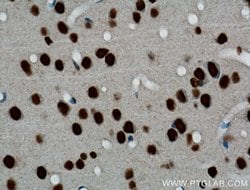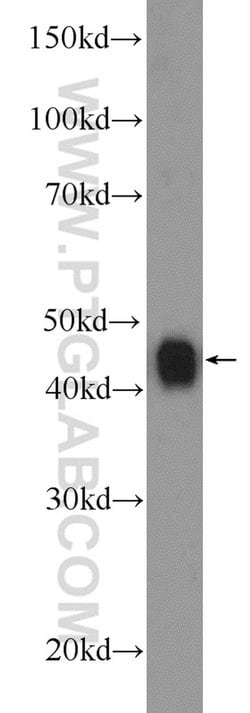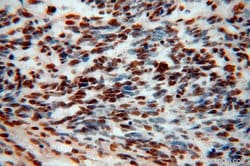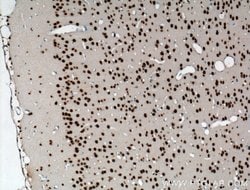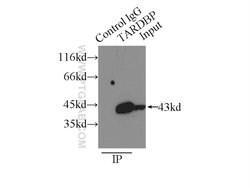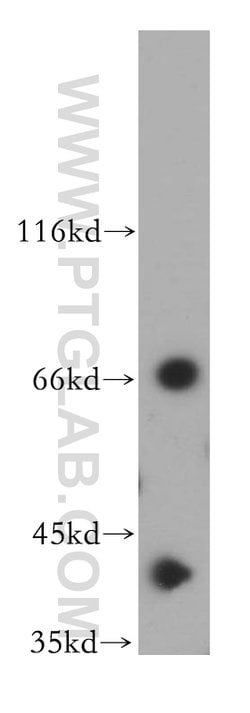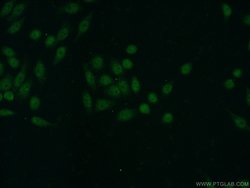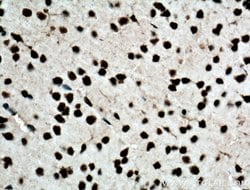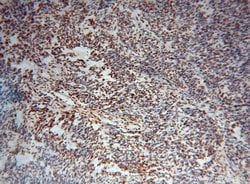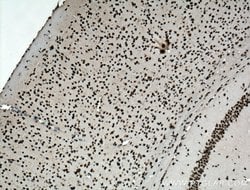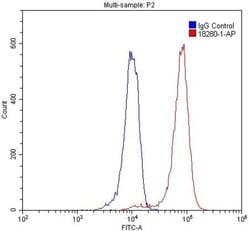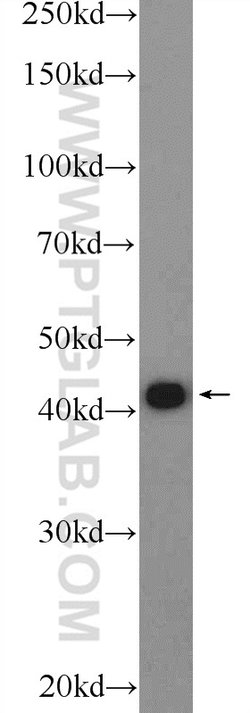missing translation for 'onlineSavingsMsg'
Learn More
Learn More
TDP-43 Rabbit anti-Human, Mouse, Rat, Polyclonal, Proteintech
Rabbit Polyclonal Antibody
145.00€ - 410.00€
Specifica
| Antigene | TDP-43 |
|---|---|
| Concentrazione | 0.25 mg/mL |
| Applicazioni | Immunoprecipitation, Immunofluorescence, Flow Cytometry, Immunohistochemistry (Paraffin), Immunocytochemistry |
| Classificazione | Polyclonal |
| Coniugato | Unconjugated |
| Codice del prodotto | Marca | Quantità | Prezzo | Quantità e disponibilità | |||||
|---|---|---|---|---|---|---|---|---|---|
| Codice del prodotto | Marca | Quantità | Prezzo | Quantità e disponibilità | |||||
|
16818354
|
Proteintech
18280-1-AP-20UL |
20 μL |
145.00€
20µL |
Effettua il login per acquistare questo articolo Hai bisogno di un conto web ? Registrati oggi stesso! | |||||
|
16808354
|
Proteintech
18280-1-AP-150UL |
150 μL |
410.00€
150µL |
Effettua il login per acquistare questo articolo Hai bisogno di un conto web ? Registrati oggi stesso! | |||||
Descrizione
This antibody recognizes the cleavage product of 20-30 kDa in addition to the native and phosphorylated forms of TDP-43. Immunohistochemical analyses of TDP-43 using this antibody detect both normal diffuse nuclear staining and insoluble inclusions in pat
Various biochemical, physiological and behavioural processes display circadian rhythms controlled by an internal biological clock. The central "gears" driving this clock appear to be composed of an autoregulatory transcription/posttranslation-based feedback loop. Cryptochrome 1 (CRY1) and 2 (CRY2) are DNA-binding flavoproteins that bear some homology to blue-light receptors and photolyases. In Drosophila, CRY is a photoreceptor for the circadian clock where it binds to the clock component TIM in a light-dependent fashion and blocks its function. Mammalian CRY1 and CRY2 function via light-independent interactions with circadian genes CLOCK and BMAL1, as well as with PER1, PER2, and TIM. They seem to act as light-independent components of the circadian clock and likely regulate Per1 transcriptional cycling via interactions with both the activator and its feedback inhibitors. Mutant mice not expressing the Cry1 or Cry2 protein display accelerated and delayed periodicity of locomotor activity, respectively. It appears that the combination of both proteins working together is essential to synchronize the organism to circadian phases. A critical balance between Cry1 and Cry2 is required for proper clock function; in complete darkness, double-mutant mice present with instantaneous arrhythmicity, indicating the absence of an internal circadian clock.Specifica
| TDP-43 | |
| Immunoprecipitation, Immunofluorescence, Flow Cytometry, Immunohistochemistry (Paraffin), Immunocytochemistry | |
| Unconjugated | |
| Rabbit | |
| Mouse, Rat, Human | |
| Q13148, Q921F2 | |
| 230908, 23435, 298648 | |
| TDP-43 Fusion Protein Ag13118 | |
| Primary | |
| -20°C | |
| TARDBP |
| 0.25 mg/mL | |
| Polyclonal | |
| Liquid | |
| RUO | |
| PBS with 50% glycerol and 0.02% sodium azide; pH 7.3 | |
| ALS10, TAR DNA binding protein, TAR DNA binding protein 43, TARDBP, TDP 43, TDP43 | |
| Tardbp | |
| IgG | |
| Antigen Affinity Chromatography | |
| Antibody |
Individuate un'opportunità di miglioramento?Condividi una correzione di contenuto
Correzione del contenuto del prodotto
Fornite il vostro feedback sul contenuto del prodotto compilando il modulo sottostante.
Titolo del prodotto
